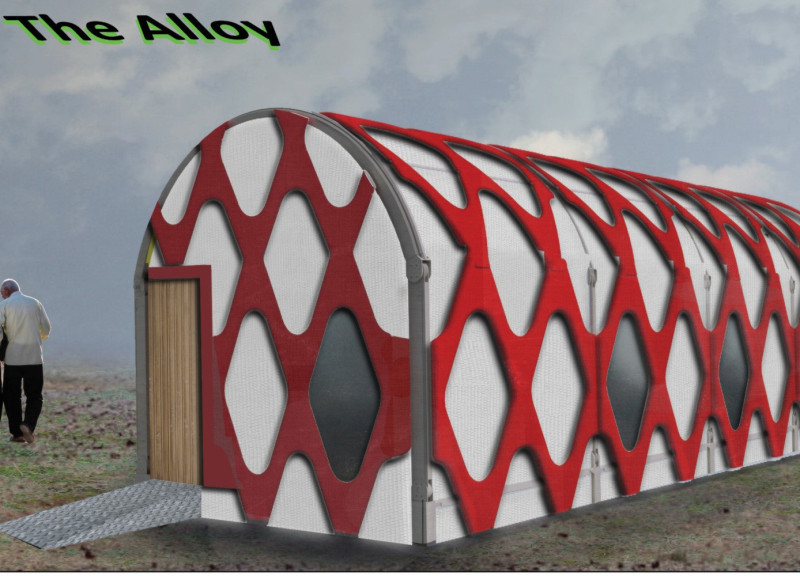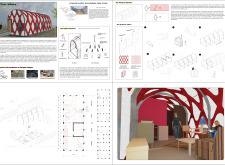5 key facts about this project
The design for the Azraq Refugee Camp in Jordan addresses the pressing need for sustainable housing solutions in a setting characterized by ongoing displacement. Established in 2014 to help manage overpopulation from nearby Syrian camps, the project aims to create a dignified living environment for thousands of refugees. The design focuses on flexibility and modularity, acknowledging the challenging conditions faced within one of the region's most notable refugee settings.
Modularity and Flexibility
The housing units are comprised of four distinct modules: living, sleeping, cooking, and sanitation. This modular approach allows for rapid assembly and disassembly, making it easier to respond in emergencies. Each module is designed to fit within a compact, movable box, which simplifies transportation and enhances operational efficiency. Construction can take only a few hours without specialized labor, providing a practical solution to immediate housing needs.
Connectivity and Essential Infrastructure
The design takes into account the average time refugees spend in camps, which is around 17 years. This understanding emphasizes the need for resilient living spaces rather than just temporary shelters. The project prioritizes essential infrastructure, incorporating electrical outlets and stable Wi-Fi access, both crucial for modern living. Such connectivity supports communication, learning, and economic activities, allowing refugees to maintain connections with the outside world.
Materials and Assembly
Aluminum is used for structural components due to its lightweight and durable characteristics. The exterior is covered in a CNC knitted mono- and multifilament textile, which provides strength and allows for ventilation while also protecting against moisture. This innovative use of textiles enables precision in production and helps maintain a consistent aesthetic across the housing units. Furthermore, it ensures that the structures can withstand the specific environmental conditions of the area.
Energy Sustainability
Solar panels are integrated into the design, serving as an energy source for the homes and the internet nodes. This focus on sustainable energy complements the overall aim of creating a supportive living environment. Incorporating such materials and technologies reflects a commitment to practical, sustainable design that can endure in difficult situations.
The housing units are thoughtfully designed to allow families to expand their living spaces as their needs change. This adaptability helps maintain dignity in challenging circumstances while fostering a sense of community within the camp. Each detail works together to create an environment that respects the realities of displacement while providing functional living spaces.



















































